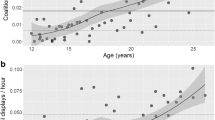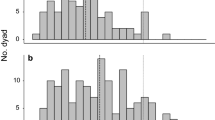Abstract
Coalitionary aggression occurs when at least two individuals jointly direct aggression at one or more conspecific targets. Scientists have long argued that this common form of cooperation has positive fitness consequences. Nevertheless, despite evidence that social bond strength (which is thought to promote coalition formation) is correlated with fitness in primates, cetaceans, and ungulates, few studies have directly examined whether coalitionary aggression improves reproductive success. We tested the hypothesis that among free-ranging chimpanzees (Pan troglodytes schweinfurthii), participation in coalitionary aggression increases reproductive output. Using 14 years of genetic and behavioral data from Gombe National Park, Tanzania, we found that coalitionary aggression increased a male’s chances of (A) siring offspring, compared to other males of similar dominance rank, and (B) ascending in rank, a correlate of future reproductive output. Because male chimpanzees form coalitions with many others within a complex network, we used social network analysis to identify the types of connections correlated with these fitness benefits. The beneficiaries of coalitionary aggression were males with the highest “betweenness”—that is, those who tended to have coalition partners who themselves did not form coalitions with each other. This suggests that beyond simply recognizing third-party relationships, chimpanzees may use this knowledge to choose coalition partners. If so, this is a significant step forward in our knowledge of the adaptive value of social intelligence. Regardless of mechanism, however, this is the first evidence of genetic benefits of coalitionary aggression in this species, and therefore has important implications for understanding the evolution of cooperation.


Similar content being viewed by others
References
Boesch C, Boesch-Achermann H (2000) The chimpanzees of the Taï Forest. Oxford University Press, Oxford, Behavioural Ecology and Evolution
Borgatti S (2002) Netdraw network visualization. Analytic Technologies, Harvard, MA
Borgatti S, Everett M, Freeman L (2002) UCINET for Windows: software for social network analysis. Analytic Technologies, Harvard, MA
Brent LJN, Lehmann J, Ramos-Fernández G (2011) Social network analysis in the study of nonhuman primates: a historical perspective. Am J Primatol 73:720–730
Bygott D (1979) Agonistic behaviour, dominance and social structure in wild chimpanzees of the Gombe National Park. In: Hamburg DA, McCown ER (eds) The great apes. Benjamin/Cummings, Menlo Park, CA, pp 405–427
Cameron EZ, Setsaas TH, Linklater WL (2009) Social bonds between unrelated females increase reproductive success in feral horses. P Natl Acad Sci USA 106:13850–13853
Chapais B (1992) The role of alliances in the social inheritance of rank among female primates. In: Harcourt AH, de Waal FBM (eds) Coalitions and alliances in humans and other animals. Oxford University Press, Oxford, pp 29–59
Cheney DL (2011) Extent and limits of cooperation in animals. P Natl Acad Sci USA 108:10902–10909
Cheney DL, Seyfarth RM (2007) Baboon metaphysics: the evolution of a social mind. Chicago University Press, Chicago
Christakis NA, Fowler JH (2007) The spread of obesity in a large social network over 32 years. New Engl J Med 357:370–379
Connor RC, Smolker RA, Richards AF (1992) Two levels of alliance formation among male bottlenose dolphins (Tursiops sp.). P Natl Acad Sci USA 89:987–990
Croft DP, James R, Krause J (2008) Exploring animal social networks. Princeton University Press, Princeton
de Vries H (1995) An improved test of linearity in dominance hierarchies containing unknown or tied relationships. Anim Behav 50:1375–1389
de Waal FBM (1982) Chimpanzee politics: power and sex among apes. Harper & Row, New York
Diggle PJ, Heagerty PJ, Liang K-Y, Zeger SL (2002) Analysis of longitudinal data, 2nd edn. Oxford University Press, New York
Duffy KG, Wrangham RW, Silk JB (2007) Male chimpanzees exchange political support for mating opportunities. Curr Biol 17:R586–R587
Dunbar RIM, Shultz S (2007) Evolution in the social brain. Science 317:1344–1347
Feh C (1999) Alliances and reproductive success in Camargue stallions. Anim Behav 57:705–713
Flack JC, Girvan M, de Waal FBM, Krakauer DC (2006) Policing stabilizes construction of social niches in primates. Nature 439:426–429
Frère CH, Krützen M, Mann J, Connor RC, Bejder L, Sherwin WB (2010) Social and genetic interactions drive fitness variation in a free-living dolphin population. P Natl Acad Sci USA 107:19949–19954
Girvan M, Newman MEJ (2002) Community structure in social and biological networks. P Natl Acad Sci USA 99:7821–7826
Goodall J (1986) The chimpanzees of Gombe: patterns of behavior. Harvard University Press, Cambridge, MA
Harcourt AH, de Waal FBM (1992) Coalitions and alliances in humans and other animals. Oxford University Press, Oxford
Higham JP, Maestripieri D (2010) Revolutionary coalitions in male rhesus macaques. Behaviour 147:1889–1908
Jennings DJ, Carlin CM, Hayden TJ, Gammell MP (2011) Third-party intervention behaviour during fallow deer fights: the role of dominance, age, fighting and body size. Anim Behav 81:1217–1222
Kalinowski ST, Taper ML, Marshall TC (2007) Revising how the computer program CERVUS accommodates genotyping error increases success in paternity assignment. Mol Ecol 16:1099–1106
Krützen M, Barré LM, Connor RC, Mann J, Sherwin WB (2004) ‘O father: where art thou?’—paternity assessment in an open fission–fusion society of wild bottlenose dolphins (Tursiops sp.) in Shark Bay, Western Australia. Mol Ecol 13:1975–1990
Lusseau D, Newman MEJ (2004) Identifying the role that animals play in their social networks. Biol Lett 271:477–481
Marshall TC, Slate J, Kruuk L, Pemberton JM (1998) Statistical confidence for likelihood-based paternity in natural populations. Mol Ecol 7:639–655
McDonald DB (2007) Predicting fate from early connectivity in a social network. P Natl Acad Sci USA 104:10910–10914
Mitani JC (2009) Male chimpanzees form enduring and equitable social bonds. Anim Behav 77:633–640
Mitani JC, Watts DP, Pepper JW, Merriwether DA (2002) Demographic and social constraints on male chimpanzee behaviour. Anim Behav 64:727–737
Muller MN, Mitani JC (2005) Conflict and cooperation in wild chimpanzees. Adv Stud Behav 35:275–331
Newton-Fisher NE (1999) Association by male chimpanzees: a social tactic? Behaviour 136:705–730
Newton-Fisher NE (2002) Relationships of male chimpanzees in the Budongo Forest, Uganda. In: Boesch C, Hohmann G, Marchant L (eds) Behavioural diversity in chimpanzees and bonobos. Cambridge University Press, Cambridge, pp 112–124
Nishida T (1983) Alpha status and agonistic alliance in wild chimpanzees (Pan troglodytes schweinfurthii). Primates 24:318–336
Nishida T, Hosaka K (1996) Coalition strategies among adult male chimpanzees of the Mahale Mountains, Tanzania. In: McGrew WC, Marchant L, Nishida T (eds) Great ape societies. Cambridge University Press, Cambridge, pp 114–134
Nishida T, Zamma K, Matsusaka T, Inaba A, McGrew WC (2010) Chimpanzee behavior in the wild: an audio-visual encyclopedia. Springer, Tokyo
Noë R (1992) Alliance formation among male baboons: shopping for profitable partners. In: Harcourt AH, de Waal FBM (eds) Coalitions and alliances in humans and other animals. Oxford University Press, Oxford, pp 285–321
Riss D, Goodall J (1977) The recent rise to the alpha-rank in a population of free-living chimpanzees. Folia Primatol 27:134–151
Schülke O, Bhagavatula J, Vigilant L, Ostner J (2010) Social bonds enhance reproductive success in male macaques. Curr Biol 20:2207–2210
Seyfarth RM (1977) A model of social grooming among adult female monkeys. J Theor Biol 65:671–698
Silk JB (2002) Kin selection in primate groups. Int J Primatol 23:849–875
Silk JB (2007) Social components of fitness in primate groups. Science 317:1347–1351
Silk JB, Alberts SC, Altmann J (2003) Social bonds of female baboons enhance infant survival. Science 302:1231–1234
Silk JB, Beehner JC, Bergman TJ, Crockford C, Engh AL, Moscovice LR, Wittig RM, Seyfarth RM, Cheney DL (2010) Strong and consistent social bonds enhance the longevity of female baboons. Curr Biol 20:1359–1361
Smith JE, Van Horn RC, Powning KS, Cole AR, Graham KE, Memenis SK, Holekamp KE (2010) Evolutionary forces favoring intragroup coalitions among spotted hyenas and other animals. Behav Ecol 21:284–303
Tabachnick B, Fidell L (2007) Using multivariate statistics, 5th edn. Allyn & Bacon, Boston, MA
Wasserman S, Faust K (1994) Social network analysis: methods and applications. Structural analysis in the social sciences. Cambridge University Press, Cambridge
Watts DP (1998) Coalitionary mate guarding by male chimpanzees at Ngogo, Kibale National Park, Uganda. Behav Ecol Sociobiol 44:43–55
Wroblewski EE, Murray CM, Keele BF, Schumacher-Stankey JC, Hahn BH, Pusey AE (2009) Male dominance rank and reproductive success in chimpanzees, Pan troglodytes schweinfurthii. Anim Behav 77:873–885
Acknowledgments
Data collection was funded by the Jane Goodall Institute. Digitization and analysis of behavioral data were supported by grants from the National Science Foundation (DBS-9021946, SBR-9319909, BCS-0452315, LTREB-1052693), the University of Minnesota, the Harris Steel Group, the Windibrow Foundation, the Jane Goodall Institute, the Carnegie Corporation, Minnesota Base Camp and Duke University. Genetic analyses were supported by grants from the National Institutes of Health (R01 AI50529, R01 AI58715, P30 AI 27767). We thank TANAPA, TAWIRI, and COSTECH for permission to work in Gombe National Park, the Gombe Stream Research Center staff for maintaining data collection, and Richard Wrangham, Michael Platt, Daniel Schmitt, Julie Horvath, David Watts, and two anonymous reviewers for comments on earlier versions of this manuscript.
Ethical Standards
This research complies with the current laws of Tanzania.
Author information
Authors and Affiliations
Corresponding author
Additional information
Communicated by D. P. Watts
Electronic supplementary material
Below is the link to the electronic supplementary material.
ESM 1
(PDF 435 kb)
Rights and permissions
About this article
Cite this article
Gilby, I.C., Brent, L.J.N., Wroblewski, E.E. et al. Fitness benefits of coalitionary aggression in male chimpanzees. Behav Ecol Sociobiol 67, 373–381 (2013). https://doi.org/10.1007/s00265-012-1457-6
Received:
Revised:
Accepted:
Published:
Issue Date:
DOI: https://doi.org/10.1007/s00265-012-1457-6




